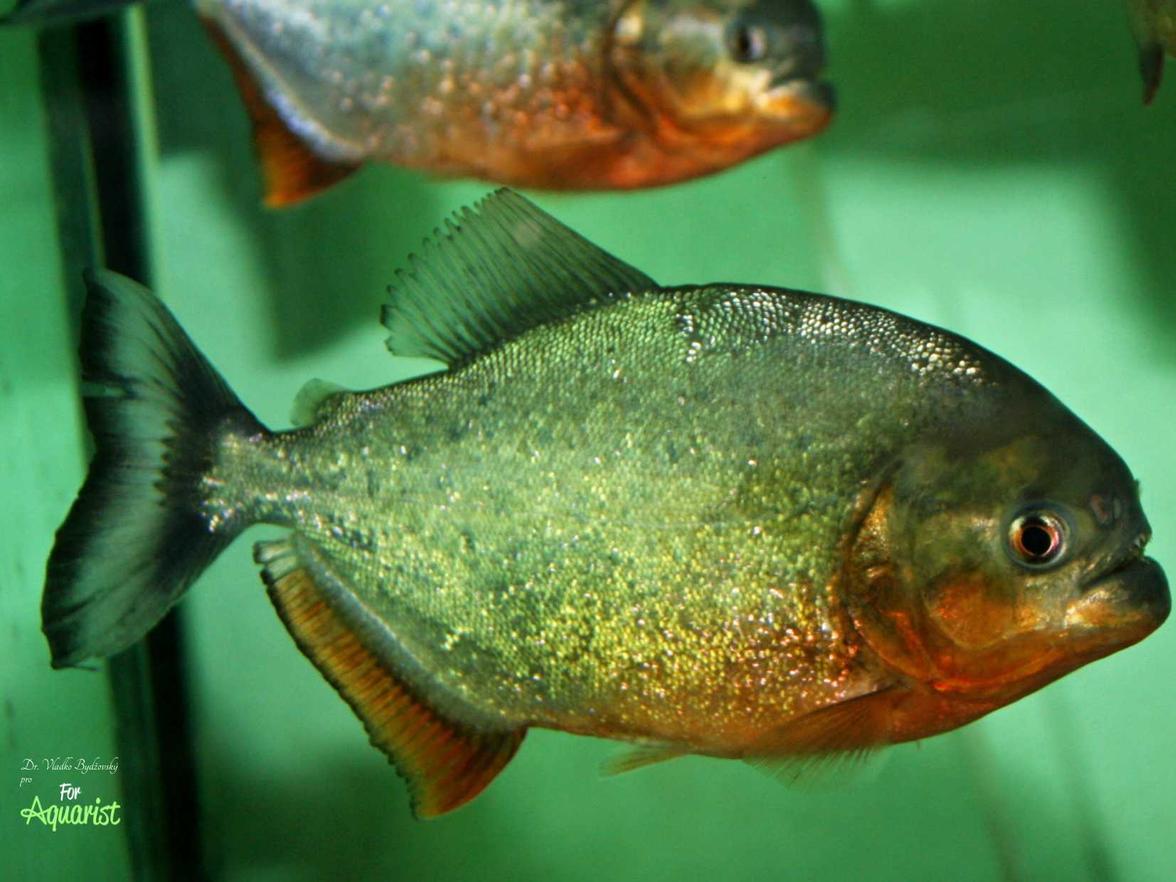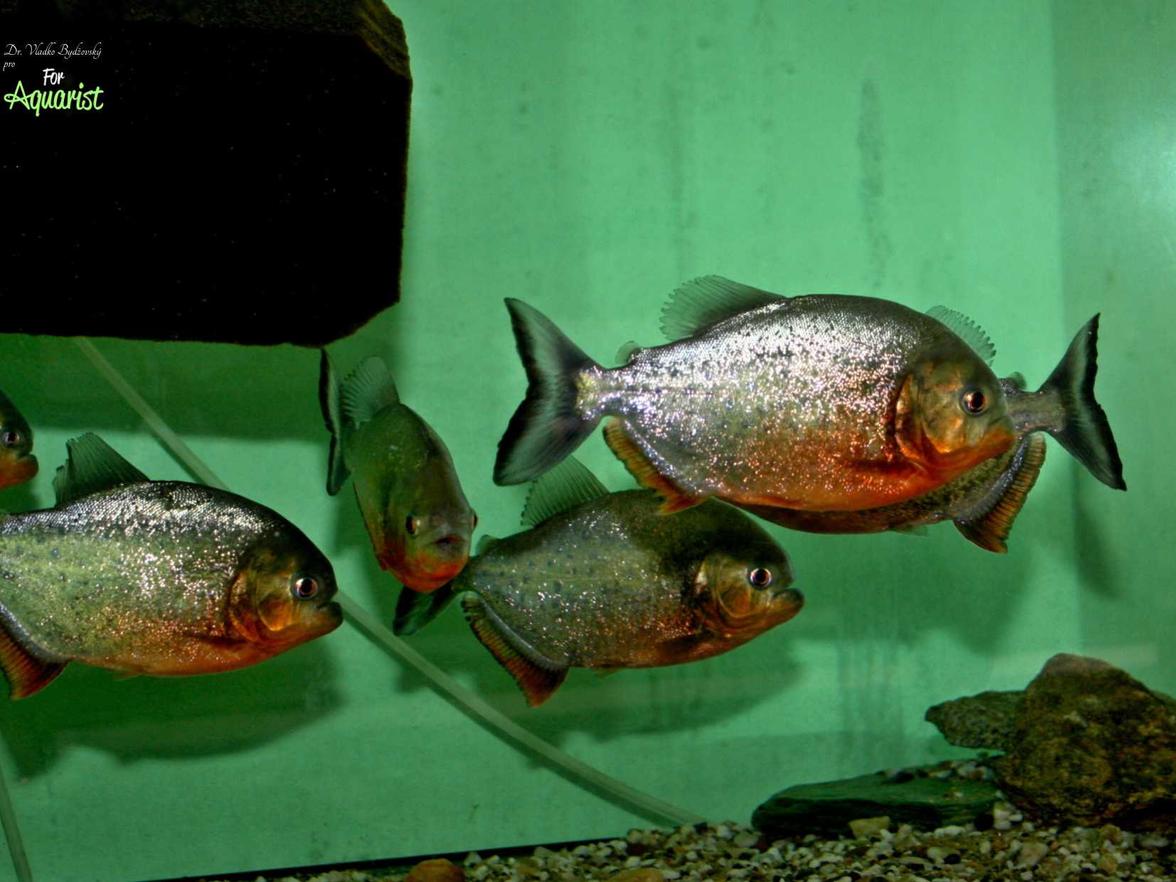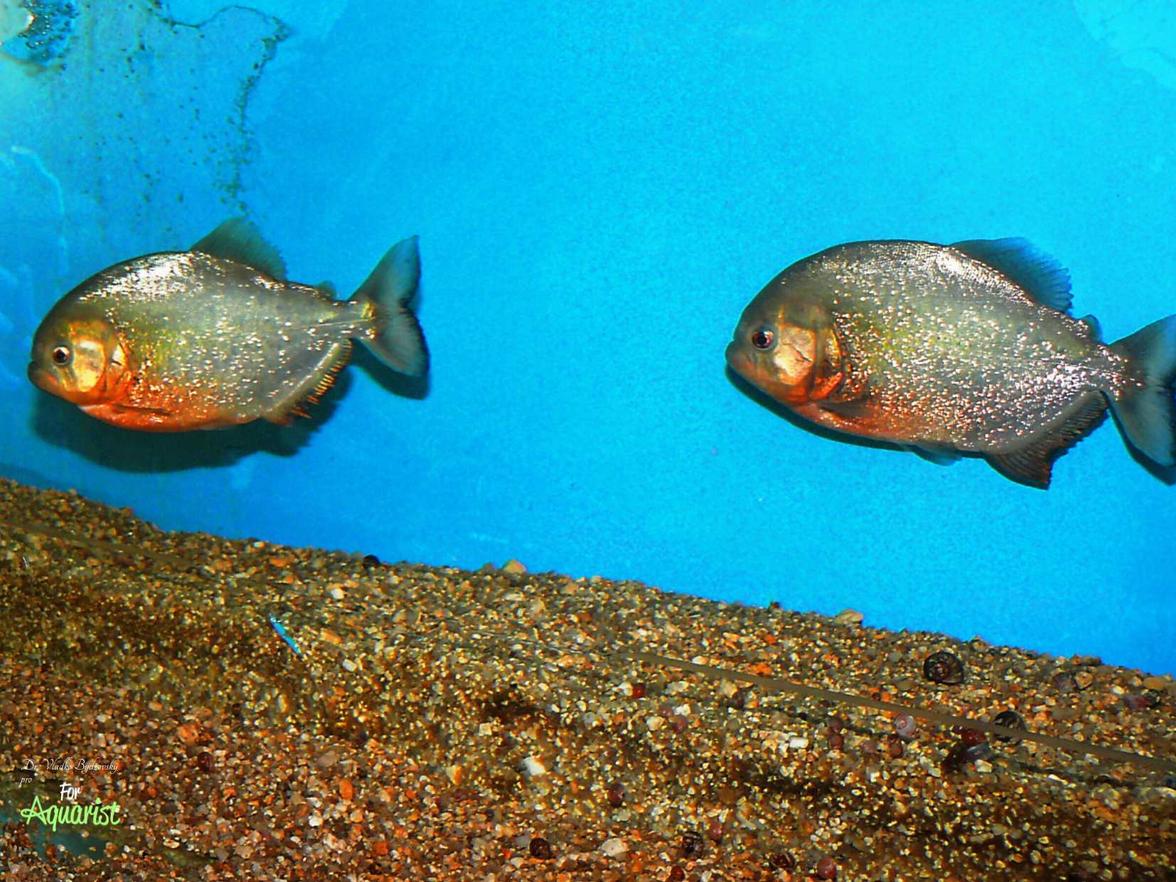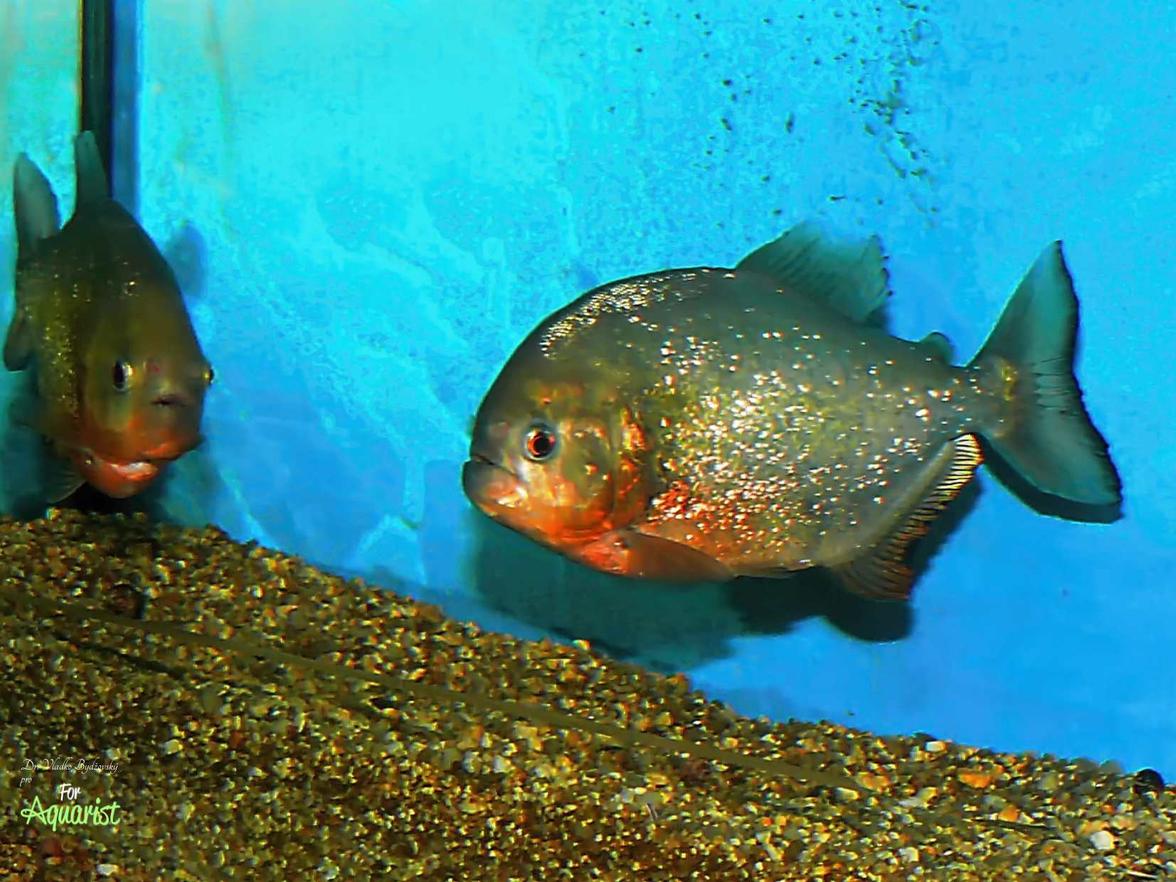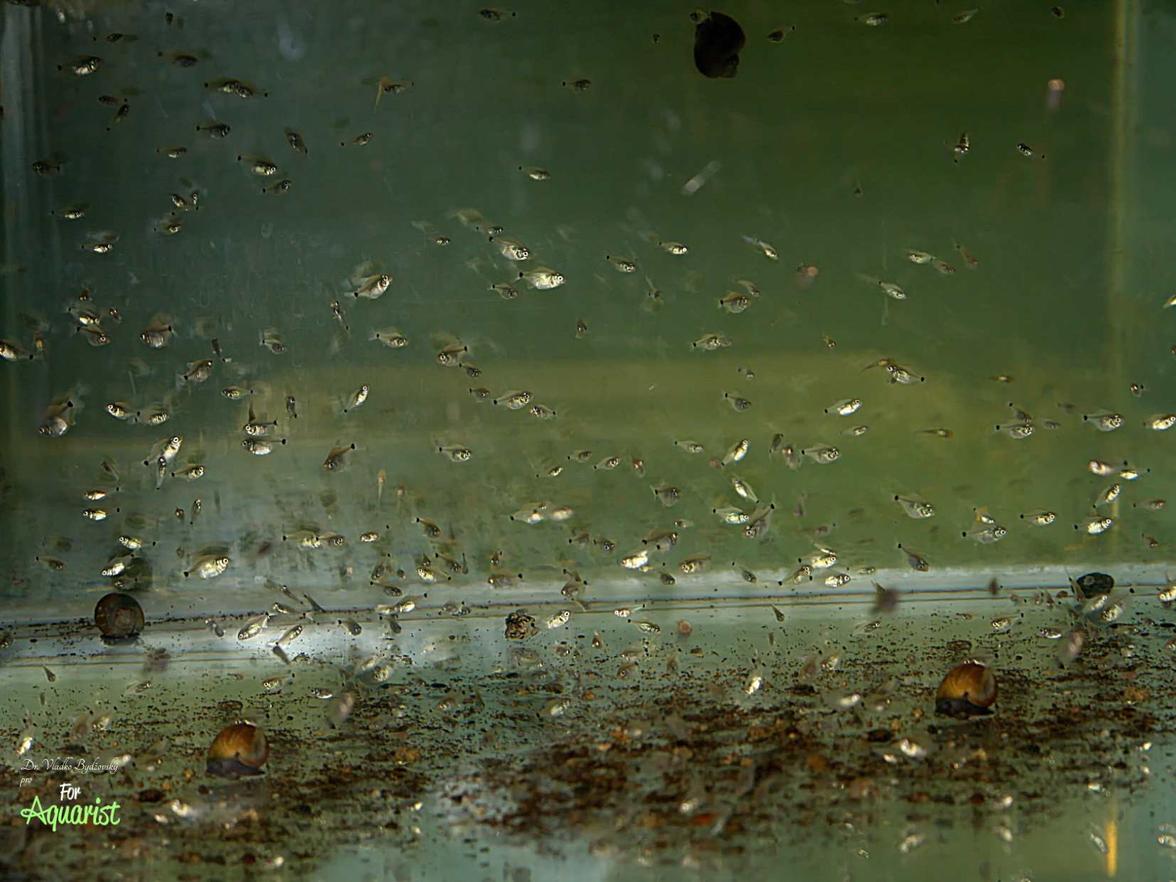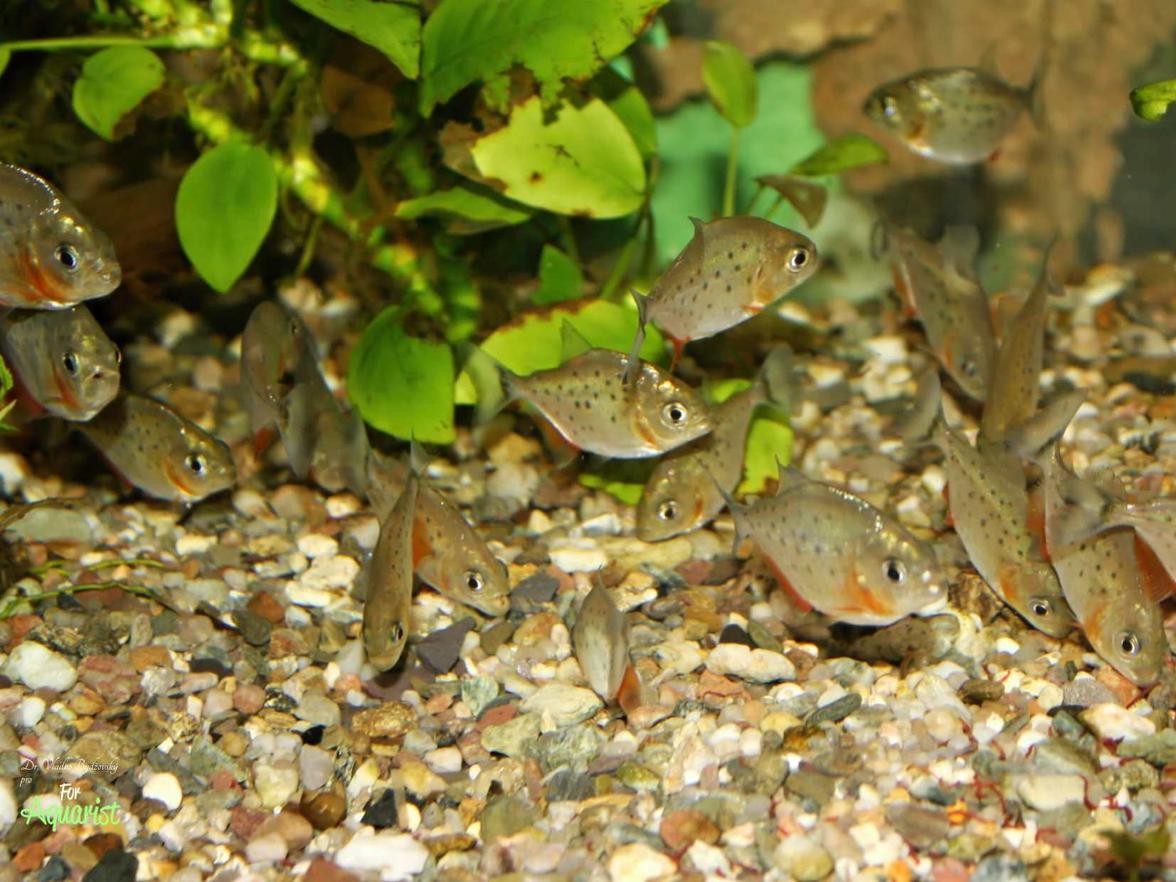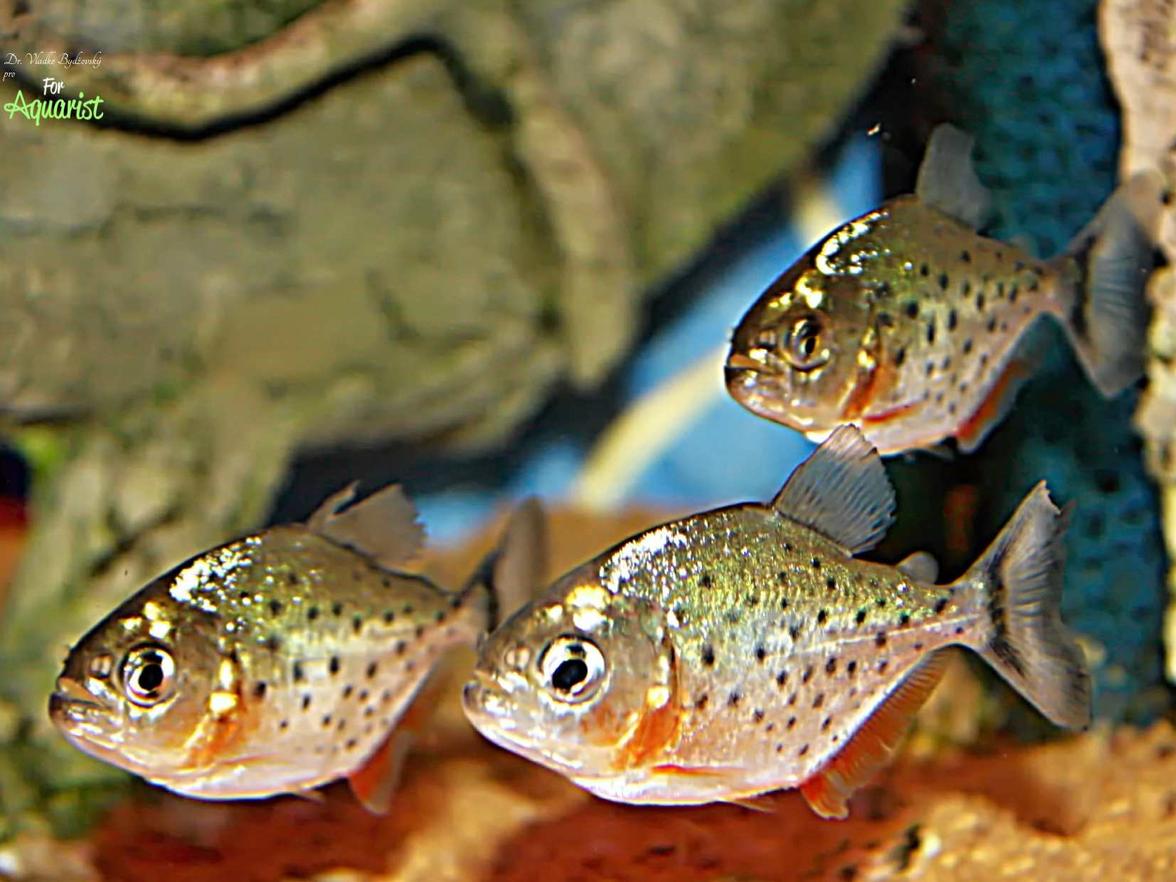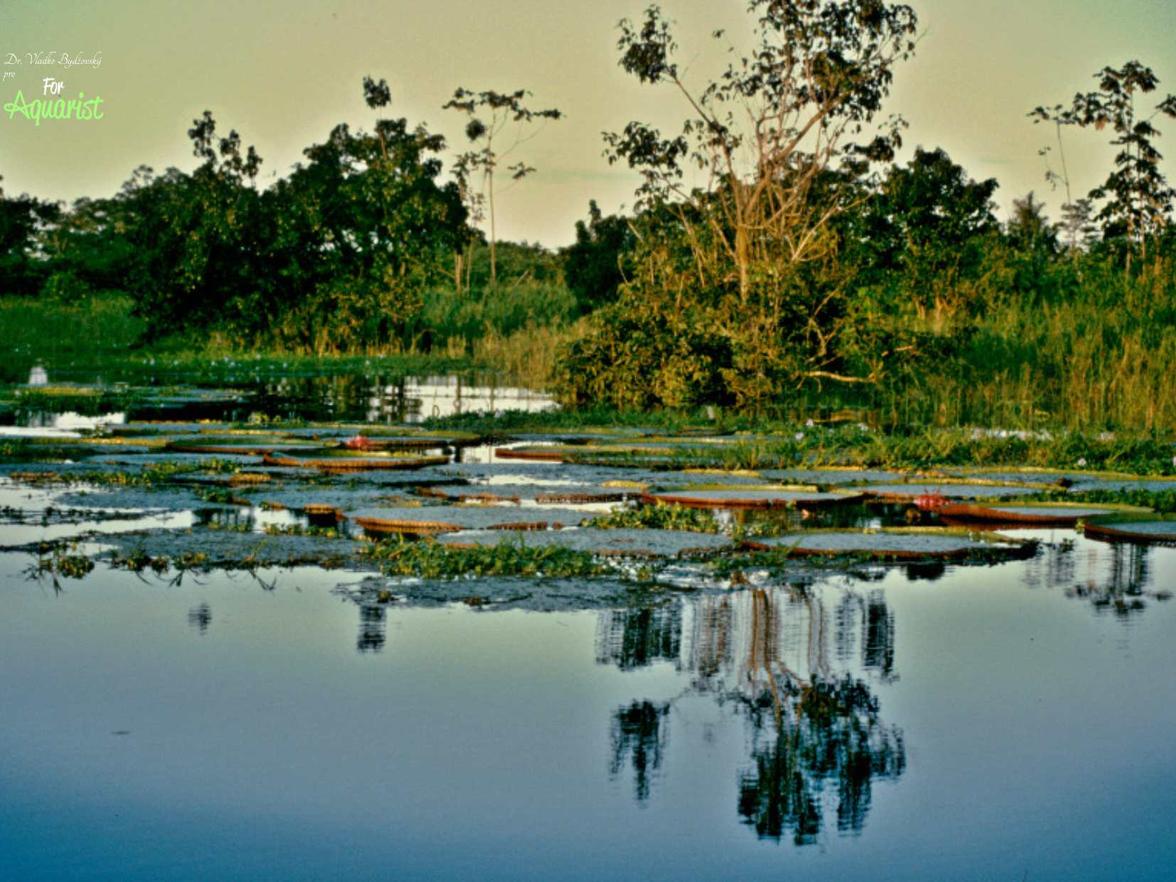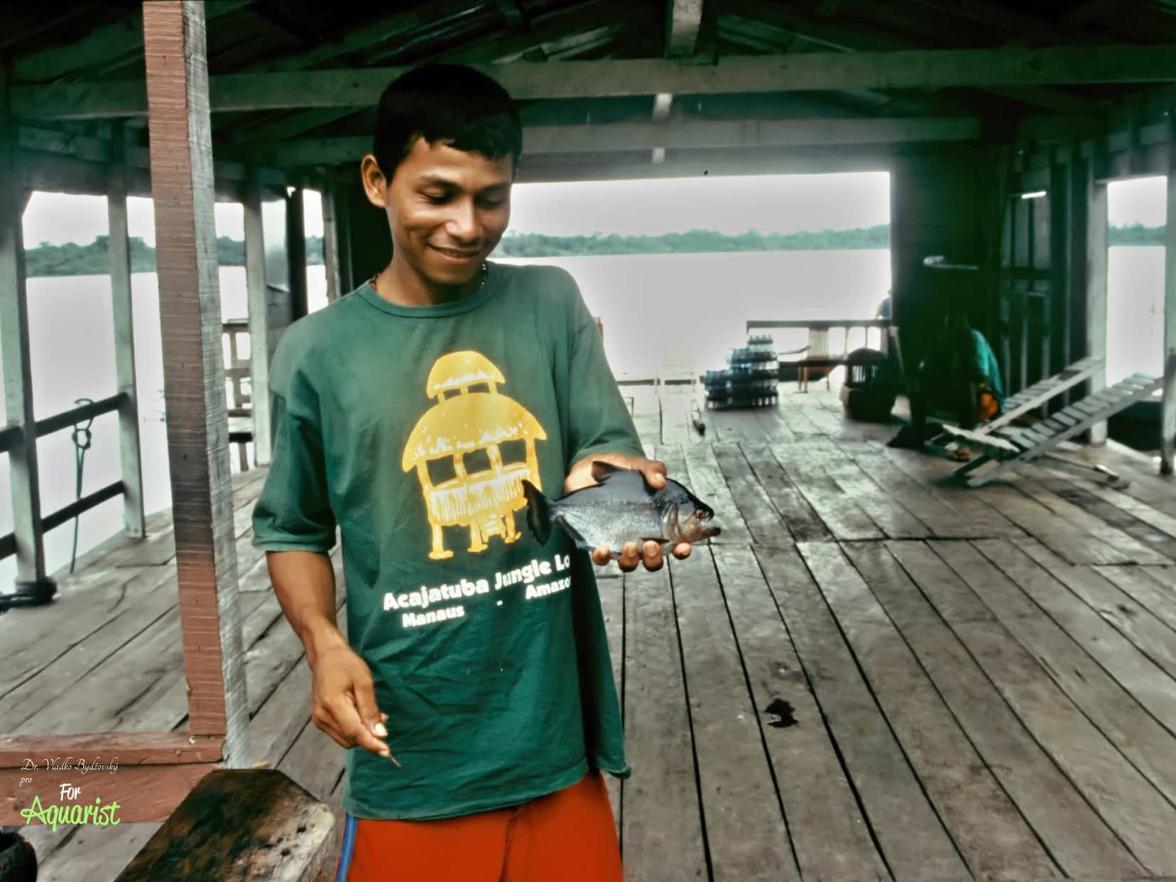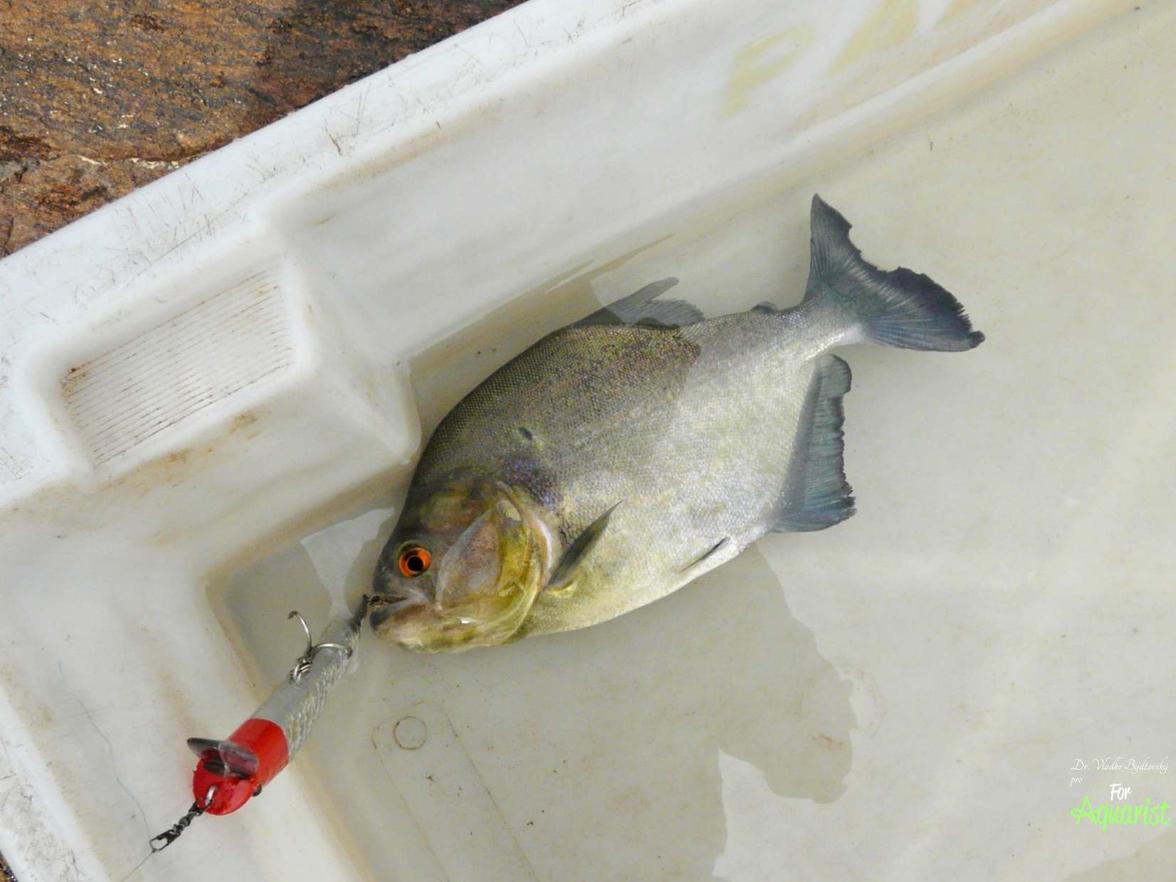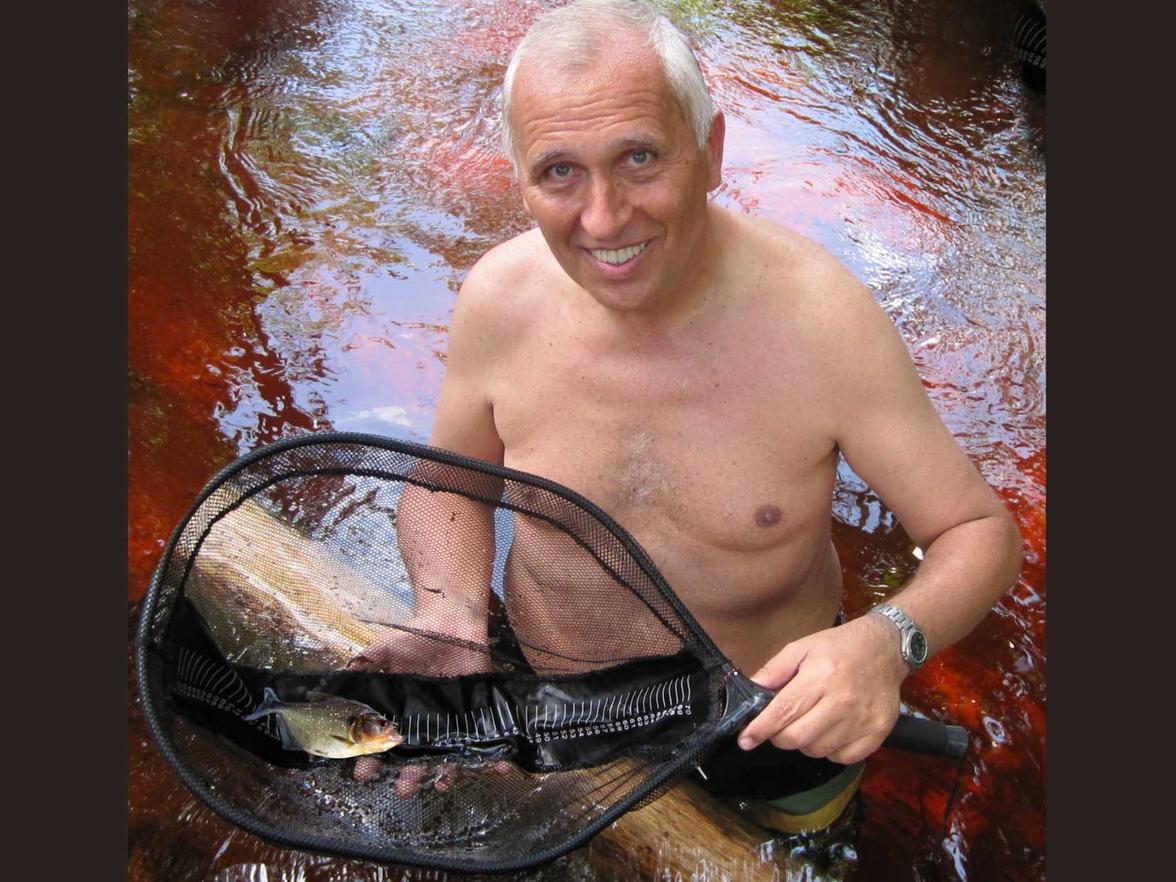Pygocentrus nattereri: Piranhas - The Myth of Bloodthirsty Killers and the Reality from the Aquarium
Piranhas are commonly known as the bloodthirsty menace of South American waters. In reality, most stories about their aggressiveness are exaggerated, if not fabricated. This article will introduce you to the reality of piranhas, their care in aquariums, and why the legends about their danger are greatly exaggerated. You will learn how to care for piranhas, what to feed them, and what they need for breeding.
Piranhas are generally considered the terror of the waters of South America. The true piranhas (subfamily Serrasalminae, genera Pygocentrus and Serrasalmus) belong to the family of characins (Characidae), but this also includes pacus (subfamily Myleinae, genus Myleus), tambaquis (Colossoma) and the well-known silver tetra (Catoprioninae, Catoprion mento). In 1993, FINK from the Basel Zoo changed the genus name Serrasalmus to Pygocentrus. Therefore, in our literature, we often still find the original name. Based on the examination of mitochondrial DNA analysis, we recognize three groups of piranhas. Among the 65 valid species, we find both herbivorous and carnivorous fish.
Characteristics
In this article, we will mainly deal with the most well-known piranha, the red-bellied piranha (Pygocentrus nattereri), which is most commonly bred in our aquariums, often in very large numbers. I would like to try to provide serious information about this fish, about which so many misconceptions circulate.
It is said to be very dangerous and aggressive. Most stories about piranhas are greatly exaggerated, if not outright fabricated. Upon closer observation, you will find that the piranha is the exact opposite of the legends that circulate about them. In aquariums, they are rather shy, seeking out shaded areas. Their behavior is easily predictable.
No piranha will attack any living organism without provocation. Among their main interests is not the consumption of entire herds of cattle or people. At the beginning of these legends was the visit of U.S. President Theodore ROOSEVELT to South America (1913, 1914), where a spectacle was staged even for journalists. Piranhas, trapped in nets in parts of the river, devoured injured cattle that had been thrown into the water.
These myths about how dangerous piranhas are still persist today. We can calmly say that a school of medium-sized fish could theoretically consume a person or a piece of cattle. But other fish can do that too, not just piranhas. Especially in the 60s and 70s of the last century and later, several programs aired on European television that portrayed piranhas as unparalleled killers. We saw how piranhas attacked large snakes and mammals; the images certainly left an impression, but no one explained how these images were created. It can be said with certainty that these were exceptional cases, most scenes were staged or cleverly edited together.
At the size of fish, the teeth and strength of the jaw can easily amputate a part of a finger or toe. Most injuries, however, occur due to careless handling during their capture. Half-dead fish have different reflexes that usually adult and healthy fish do not have. The consequences of attacks on people were dealt with by, for example, HADDAD and SAZIMA (2003), the subject of the study was residual waters that were inhabited not only by piranhas (Serrasalmus spilopleura), but were also used by the local population for bathing. Damage was usually individual bites and was attributed to territorial behavior of the fish during rubbing.
Fatalities caused by piranhas are not known. Piranhas are very sensitive to changes in their environment, reacting primarily to objects that fall into the water. They can easily attack a heron chick that carelessly falls from a branch into the water. They consider it their food.
Potentially dangerous to humans are three species of piranhas: Pygocentrus nattereri found throughout the Amazon region, Pygocentrus cariba in the Orinoco basin, and Pygocentrus piraya in the Rio São Francisco basin in eastern Brazil. These species live in large schools, and especially stressful situations during dry periods, when the waters recede and the fish live in "residual" waters, can lead to situations where the fish will defend themselves. The piranha takes on certain tasks of "health police" in its homeland. In addition to normally caught fish, it also consumes sick and dead fish. Their immune system is very strong and insensitive to normal fish diseases, which does not mean that we should neglect the proper values of water in the aquarium.
It also applies that excessive fluctuations can be harmful to piranhas. They react to high levels of nitrites, copper, and other toxins just as harmfully as other fish. The piranha is in no case a fish suitable for beginners, it is an animal that requires appropriate care, such as its dietary needs. Regular flake food will not be sufficient in any case! For this reason, I recommend weighing all the pros and cons for anyone interested in keeping piranhas in advance.
Legends
Piranhas are generally, not just in aquaristics, well-known fish. It is a term associated with the waters of the Amazon, and especially Pygocentrus nattereri is generally considered an extremely dangerous species. It is possible to place meat between questions like "Aren't you afraid of piranhas?", "Aren't you afraid of sharks?" or "Aren't you afraid of being bitten by a snake?".
There are known legends of how cattle herders sacrifice one piece of cattle to protect the others, which is injured and thrown into the river, while the predatory piranhas devour the unfortunate victim, allowing the other pieces to easily cross. In a few minutes, only bones remain of the heifer... In nature, the fish actually live in larger schools and when foraging for food, they attack all living things, including waterfowl, except for humans; as the water gradually recedes, they themselves become prey to larger predatory birds. It is a carnivorous animal in the water with all the consequences and risks. Does it even make sense to keep such animals in an aquarium? But this is a question concerning the keeping of all fish in aquariums. Still, I think that even such a large species can be kept in an appropriately sized aquarium without us talking about torturing the animals. Even in such a tank, the fish should have the opportunity to hide or escape, without feeling excessively oppressed. Territorial defense is a daily occurrence, it is nothing unusual. Piranhas are territorial fish and the literature often discusses the problem of whether they can be called schooling fish.
Homeland
The natural range of piranhas is very large. They are found in almost all rivers of South America, in various types of water, from clear (pH 4.6-6.6, up to 0.3°dKH), through white water (pH 6.5-7.4; 0.2-0.5°dKH) to black (pH 3.8-5.0, 0.0-0.2°dKH). As different as the types of water are, so different are their values. The only common feature of all the aforementioned waters is their softness and a temperature ranging between 26-30°C. Piranhas inhabit the regions of Guyana, Paraguay, the northeastern part of Brazil, that is, the waters of the Amazon basin, but also La Plata and Orinoco. They live not only in slowly flowing waters but also in various large pools flooded by rainforests.
Different Piranhas
Piranhas are currently known to have more than 65 different species, with more than 12 species originating from the Orinoco basin. For aquarists, this is an interesting fact, but only a few species of piranhas are usually offered in aquarium shops. The most well-known of them is Pygocentrus nattereri, which was imported to Germany as early as 1911, growing up to 28-30 cm, while other species of piranhas generally grow to 15-25 cm, the largest of the species, Pygocentrus rhombeus, grows up to 38 cm. They require a water temperature of 23-27°C, pH 5.5-7.5, and hardness up to 20°dGH. Breeding has not yet been observed in the wild, but it is known from aquarium literature. The Basel Zoo has been observing regular breeding since 1976. Interesting breeding has also been observed in a 20,000 l aquarium at the Aquarium am ZOO in Cologne. In recent years, our breeders have significantly contributed to the fact that a significant part of piranhas on the European market comes from Czech aquariums.
Breeding
We must take into account that an aquarium for piranhas represents only a limited territory, resembling small, isolated sections of the world, as they occur after the rainy season in the Amazon. Especially large and hungry fish may consider the owner's hand as a threat, and in this case, an attack may occur. Therefore, always approach and handle these fish with caution.
For breeding, it is good to acquire a school of at least 6-8 individuals; we do not keep these fish individually, as it could be compared to torturing the fish. We need a well-planted large tank with a capacity of at least 200-500 liters with many hiding places, including numerous roots, stones, and strong plants. As pure carnivores, they do not damage plants. It is essential not to forget regular water changes and good filtration to reduce the amount of waste products from the fish's metabolism.
In old water, they are more aggressive and attack each other, while in regularly changed water, they are often incredibly cheerful and lively. Fish can be kept in hard water, but this does not correspond to the ideal conditions that piranhas require. Before purchasing these fish, we recommend acquiring specialized literature. However, it still holds that personal experience is more important than a book. I may not agree with all the opinions of the author either.
Aquarium for Piranhas
A fine sand substrate with a grain size of around 2 mm is suitable for the bottom; it is better to use dark sand, while lighter sand can be compensated for with hiding places with plenty of well-chosen plants. Definitely do not use coarse gravel, as remnants of plants, food, and feces can easily settle between the individual grains, leading to rotting, and these remnants are then poorly siphoned off.
They enormously strain water quality. With fine sand, we can easily remove all these remnants both manually and with the help of a powerful filter. For decoration, we recommend both roots and stones, sandstone shelters, caves, or similar hiding options that serve for weaker individuals.
Lighting
The lighting should be rather subdued, which corresponds to the requirements of the plants – alongside Amazonian sword plants of the genus Echinodorus or African anubias (Anubias), we can also use some floating aquatic plants (Lemna minor is excellent and is also a good indicator of water quality). Piranhas are very skittish, so we take care when transferring them. They can easily panic and injure themselves in the aquarium. Sometimes they literally burrow between two stones or behind a heater and then die there.
Filtration
It must be powerful; it is better to use external filters, ideally using a nylon mesh that we clean regularly, while other parts of the external filter are replaced every half to one year. It is not good, as is a common practice in our regions, to rinse filters daily or once a week. The filter must primarily allow water to flow well. The first layers of the nylon mesh protect against clogging with waste, which we can clean regularly as needed. We do not place fish in a newly set-up tank immediately, but only after 3-4 weeks, until the filter starts functioning properly, including biologically.
Feeding
This is quite a sensitive topic; piranhas do not eat everything we offer them. Especially young fish refuse unfamiliar food. As they grow older, the pieces of food can be larger; for adults, feeding every 2-3 days with an appropriate amount is sufficient. This means that they will consume food within 5-10 minutes.
Each fish must receive at least one piece of food; we must pay attention to this. Overfeeding does not occur here; the danger lies only in the fact that leftover food remains on the bottom and leads to a rotting process. We use both dead, sick, or degenerated fish, as well as fish meat, shrimp, or beef heart. We can also use various frozen food types. Feeding piranhas is a great attraction for spectators; I have observed them in the Cologne Aquarium am Zoo, in Stuttgart's Wilhelm, in the Löbbecke Aquarium Düsseldorf, Aquarium Aktis in Amsterdam, and other public aquariums in Germany and the Netherlands. It is worth seeing 20-30 cm large specimens as they are released into the offered pieces of meat, which disappear right before our eyes. Although piranhas are schooling fish, each fish has its position in the school. This can be observed precisely in these large exhibition tanks (with a water volume of 5-20,000 liters). It is also very interesting how Germans manage to feed and keep piranhas in aquariums so that they do not notice other fish. For example, in the Bavarian Aquarium Jagging, piranhas have been living for a long time in the company of red neon tetras, red-headed tetras, and other mostly characin fish and catfish without these small companions being attacked.
Breeding
Breeding is quite simple. We only need to have well-grown adult individuals around 2 years old or older. The basis of their good condition is both a varied diet and regular water changes. If we want to bring piranhas to spawning activity, it is necessary to start with regular water changes and a slight increase in temperature. These fish are not too demanding regarding water chemistry; breeding and raising can occur in soft or moderately hard water.
After repeated water changes, we usually observe how one (usually the strongest) male separates from the school and begins to guard a territory where it would like to spawn. We also observe males courting the female, which is best prepared for spawning. This occurs both in "T-position" and during parallel swimming, where the male swims alongside the female, spreads its fins, and tries to convince the female of its attractiveness.
When we start to observe a certain interest from the males in the females and the formation of territories, it is better to transfer the pair that seeks each other into an aquarium with a capacity of at least 150-200 liters (they can also breed in smaller tanks, but we often observe various injuries to the females, especially bitten fins). We prepare the water with a pH around neutral, hardness about 4-6°dGH. Spawning usually begins after dawn with a change in the behavior of the male, who not only courts the female but also builds a pit in the sand, often with a diameter of 20-30 cm, but even 50x50 cm (depending on the size of the tank). The female then cleans this pit with her mouth.
The male then swims up to the female from the side, presses its tail against her, starts to tremble, and swims parallel to the female upwards. Finally, it seems to embrace the female's belly fin and presses against her, and both fish swim for a moment over the spawning pit, during which the sexual products of the fish are expelled. If there are plants in this space, the male often nibbles them before spawning begins, leaving only stumps 5-10 cm above the sand. Later, the fry can find shelter in this area.
An interesting change occurs in the male's coloration, which darkens all over its body, and the red coloration of the throat and belly fades. The young female lays about 500-1,000 eggs, while older ones lay 2,000-10,000 eggs, which are 1.7-2.1 mm in size. About 1-2 hours after spawning, the male's aggression increases, first driving the female away from the clutch and then guarding the clutch for another seven to eight days. Hatching occurs depending on the water temperature within 24-36 hours; the hatched fry are 4-5 mm long, spending about 4-5 days in the yolk sac, so about 7-8 days after hatching, the young fish swim off. Usually, on the seventh day, some of the young start their first attempts at swimming, and the next day, all the young are already swimming.
The seventh day marks the end of the male's care, who sometimes still cares for the fry until the next day, until all the larvae swim off. At that time, we can start feeding them with artemia nauplii. The young swim in schools during the day, often protected by the stumps of the original plants. In about three weeks, they reach a length of 1 cm and begin to accept coarser food, such as nauplii of daphnia, grated beef heart, etc.
In recent years, the unsuitability of animal proteins as food for fish (especially for tetras) has been repeatedly discussed. For piranhas, it is a question of how much this food can harm them, given the enzymatic equipment of their digestive tract. Meat can also be used, preferably in the form of fillets. At this time, we are already starting to observe the first signs of cannibalism! The fish must be sorted according to size.
Images:
- A two-year-old male piranha.
- For breeding, we must always acquire a school of piranhas.
- At the beginning of spawning, the male chases the female.
- A moment of rest before spawning.
- Individuals about a month old.
- Young individuals are spotted.
- Based on this coloration, the aquarist would have difficulty guessing the coloration of adults.
- Piranhas live practically throughout the Amazon – even in such a beautiful nook with royal water lilies at dusk.
- Children of the indigenous people try to offer various catches, most often piranhas.
- You can catch piranhas quite easily with a regular net.
- Piranhas are often and very easily caught on a fishing rod.
